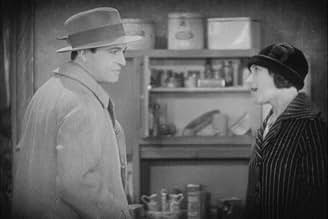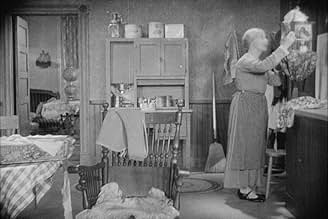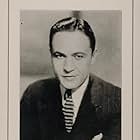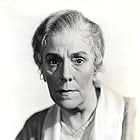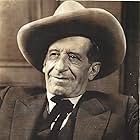The Sheriff and County Prosecutor come to an isolated country farm where a woman killed her husband, attempting to gather evidence. Only their wives are able to solve the mystery, which they... Read allThe Sheriff and County Prosecutor come to an isolated country farm where a woman killed her husband, attempting to gather evidence. Only their wives are able to solve the mystery, which they decide to keep to themselves.The Sheriff and County Prosecutor come to an isolated country farm where a woman killed her husband, attempting to gather evidence. Only their wives are able to solve the mystery, which they decide to keep to themselves.
- Director
- Writer
- All cast & crew
- Production, box office & more at IMDbPro
Storyline
Did you know
- TriviaVitaphone production reels #3722-3723.
Featured review
Nowadays the name of playwright Susan Glaspell is familiar only to theater scholars, but at the dawn of her career she was considered as promising as Eugene O'Neill. Both Glaspell and O'Neill developed their skills as members of the Provincetown Players, a group of earnest young writers and actors who first worked together in 1915 at a small Cape Cod playhouse, and later migrated to NYC's Greenwich Village. The Provincetown Players tackled serious and often controversial themes usually avoided by the commercial playwrights of the era. Glaspell's one-act play Trifles, first staged in 1916, was acclaimed as a sensitively written drama with a distinctly feminist viewpoint, a quietly impassioned portrait of a victimized woman who avenges herself on a cruel and emotionally abusive man.
The story, set in a rural area in the dead of winter, concerns the death of a farmer named John Wright, found in his bed with a rope around his neck. His wife is suspected of murder, but no motivation can be found. While law enforcement officials search the grounds, two women, the sheriff's wife Mrs. Peters and her friend Mrs. Hale, remain in the kitchen and discuss the tragedy. The ladies are regarded with smug condescension by the men, who treat them like children. But while the men are mystified by the crime it is the women who solve the mystery, almost accidentally, through their examination of evidence they find in Mrs. Wright's kitchen and in her knitting basket. Ironically, the crucial clues are revealed in "trifles," the ordinary household objects a farm woman uses in the course of daily life.
When I learned that Glaspell's one-act was filmed as a Vitaphone short in 1930 I looked forward to seeing it. But unfortunately this adaptation doesn't live up to the source material, due in part to changes and cuts in the text which weaken its impact. In the play, we never actually see John Wright or his wife; what happened between them in their drab, cheerless farmhouse is left to the imagination. But this film begins with a dramatization of the event that provokes Mrs. Wright to kill her husband, which I believe was a mistake. First, it destroys the play's element of mystery, and second, the uncredited actor who plays John Wright portrays him as a scowling, raspy-voiced villain. It is bluntly demonstrated in the film's opening scene that he's a terrible person, whereas in the stage version we draw our own conclusions along the way, based on what we hear. Another new scene has been added in which Mrs. Wright is questioned about her husband's death, dramatizing an event a witness describes as a flashback in the play. This brief scene follows the playwright's text closely, and it's well played by Sarah Padden, so I feel it's an effective change and even an improvement on the stage version. Later on, however, there are cuts in the text where Mrs. Wright's early years are described, and these deletions make her motivation for killing her husband less clear.
But the biggest problem with this film is the casting of Mrs. Hale. She's the story's moral center, the one who first discovers how and why John Wright was killed, and who blames herself for not having been more of a friend to Mrs. Wright. The role calls for someone warm and sympathetic, but actress who plays Mrs. Hale in this short is neither. (Oddly, despite having the largest role, she's not identified in the credits.) The film's Mrs. Hale is awkward, stiff, and artificial, declaiming her lines in a theatrical fashion. When she finds the key piece of evidence which explains the mystery her "surprise" take is completely unconvincing. It's too bad the role wasn't assigned to Blanche Friderici, who plays the sheriff's wife and gives a more natural and believable performance.
Viewers with an interest in theater of the early 20th century may want to see this film due to its historical significance, but others will find little reason to watch. What could have been a stirring drama is instead something of a misfire.
The story, set in a rural area in the dead of winter, concerns the death of a farmer named John Wright, found in his bed with a rope around his neck. His wife is suspected of murder, but no motivation can be found. While law enforcement officials search the grounds, two women, the sheriff's wife Mrs. Peters and her friend Mrs. Hale, remain in the kitchen and discuss the tragedy. The ladies are regarded with smug condescension by the men, who treat them like children. But while the men are mystified by the crime it is the women who solve the mystery, almost accidentally, through their examination of evidence they find in Mrs. Wright's kitchen and in her knitting basket. Ironically, the crucial clues are revealed in "trifles," the ordinary household objects a farm woman uses in the course of daily life.
When I learned that Glaspell's one-act was filmed as a Vitaphone short in 1930 I looked forward to seeing it. But unfortunately this adaptation doesn't live up to the source material, due in part to changes and cuts in the text which weaken its impact. In the play, we never actually see John Wright or his wife; what happened between them in their drab, cheerless farmhouse is left to the imagination. But this film begins with a dramatization of the event that provokes Mrs. Wright to kill her husband, which I believe was a mistake. First, it destroys the play's element of mystery, and second, the uncredited actor who plays John Wright portrays him as a scowling, raspy-voiced villain. It is bluntly demonstrated in the film's opening scene that he's a terrible person, whereas in the stage version we draw our own conclusions along the way, based on what we hear. Another new scene has been added in which Mrs. Wright is questioned about her husband's death, dramatizing an event a witness describes as a flashback in the play. This brief scene follows the playwright's text closely, and it's well played by Sarah Padden, so I feel it's an effective change and even an improvement on the stage version. Later on, however, there are cuts in the text where Mrs. Wright's early years are described, and these deletions make her motivation for killing her husband less clear.
But the biggest problem with this film is the casting of Mrs. Hale. She's the story's moral center, the one who first discovers how and why John Wright was killed, and who blames herself for not having been more of a friend to Mrs. Wright. The role calls for someone warm and sympathetic, but actress who plays Mrs. Hale in this short is neither. (Oddly, despite having the largest role, she's not identified in the credits.) The film's Mrs. Hale is awkward, stiff, and artificial, declaiming her lines in a theatrical fashion. When she finds the key piece of evidence which explains the mystery her "surprise" take is completely unconvincing. It's too bad the role wasn't assigned to Blanche Friderici, who plays the sheriff's wife and gives a more natural and believable performance.
Viewers with an interest in theater of the early 20th century may want to see this film due to its historical significance, but others will find little reason to watch. What could have been a stirring drama is instead something of a misfire.
Details
- Runtime16 minutes
- Color
Contribute to this page
Suggest an edit or add missing content




